As I mentioned in my last newsletter, last year the Ronald Reagan Institute commissioned me to write an extended essay reflecting on Reagan’s first inaugural. I’m sending that essay as a French Press for two reasons. First, to demonstrate that our nation has been capable of remarkable turnarounds even in the recent past.
Second, as the right begins its “civil war” to decide the future of the Republican Party, it’s important to remember that terms like “zombie Reaganism” so popular on the reactionary/populist right reduce Reagan’s leadership to an often-caricatured set of outdated policy positions. In reality, it represented a call not merely for “less government” but also for “better government” and was fundamentally a gamble on the character and courage of the American people.
Reagan’s policies represented a response to the specific challenges of his time. No one should be copying the platforms of the past. The current question is whether Reagan’s fundamental assessment of our underlying national virtues still holds true. If it does, then a new Reaganism can indeed win the day.
Hinge moments in history are often obvious only in hindsight. And so it was on an unseasonably warm day in January, 1981. Ronald Reagan took the oath of office and delivered his first inaugural address. It wasn’t his most memorable speech. Ask a Reagan Republican to list Reagan’s most meaningful public addresses, and he’ll likely respond immediately with quotes.
“These are the boys of Pointe du Hoc. These are the men who took the cliffs. These are the champions who helped free a continent. These are the heroes who helped end a war.”
“Mr. Gorbachev, tear down this wall.”
“The crew of the space shuttle Challenger honored us by the manner in which they lived their lives. We will never forget them, nor the last time we saw them, this morning, as they prepared for their journey and waved goodbye and ‘slipped the surly bonds of earth’ to ‘touch the face of God.’”
The first inaugural, by contrast, was an argument. Our nation faces a crisis—a crisis brought on by its own government—and the solution to that crisis lies in the energy and courage of the American people. This was the core argument of the Reagan era, and he was proven correct, in perhaps unpredictable ways.
But let’s first focus on the word “crisis.”
At that moment in American history, Americans were largely united in the belief that the country faced a crisis. Indeed, the country was barely a year removed from Jimmy Carter’s famous “malaise” speech, where he addressed the objective challenges of American life—challenges with inflation, energy, and unemployment—but also a deeper kind of threat:
The threat is nearly invisible in ordinary ways. It is a crisis of confidence. It is a crisis that strikes at the very heart and soul and spirit of our national will. We can see this crisis in the growing doubt about the meaning of our own lives and in the loss of a unity of purpose for our nation.
There is nothing necessarily wrong with calling a people to introspection or to noting that national crises can also be crises of confidence. But in many ways it was the wrong diagnosis at the wrong time.
Simply put, by November 1980 more than a decade of anguish, pain, and grotesque government mistakes had made our national predicament clear—the American people weren’t failing. They were being failed, and they had been failed for a very long time.
Readers in 2020 are familiar with the deep shock of an annus horribilis. In a single year, the nation endured impeachment, a pandemic, a dramatic economic downturn, and widespread urban unrest. But let’s remember the experience of adult Americans in the dozen years before Reagan’s election.
Yes, the immediate challenges were profound. The nation was nearing the end of the humiliation of the Iran hostage crisis—one that included a botched rescue operation that left eight Americans dead in the Iranian desert.
At the same time that Americans retreated from a burning outpost in the desert, the Soviet Union appeared poised to reap the benefits of seizing Afghanistan the year before. The image was clear. One superpower was retreating. The other was advancing.
In 1980, the terms “stagflation” (high inflation and slow economic growth) and “misery index” (the sum of the inflation rate and the unemployment rate”) entered the American lexicon.
All of these developments would be bad enough in their own context, but they were taking place against the backdrop of a truly shattering dozen years.
Consider all that occurred just from the first gunshots of the Viet Cong’s Tet Offensive in 1968. In Vietnam, American military confidence was shaken, then shattered as the North Vietnamese outlasted America in a long and bloody war. The images of the last American helicopter out of Saigon were still fresh in American minds.
The military emerged from the Vietnam war weakened, facing a crisis of morale and the challenge of widespread drug use. America’s nuclear umbrella kept it safe, but no longer did Americans have confidence that their military could defeat America’s foes. The Soviet Union, by contrast, seemed strong. Its forces massed in overwhelming numbers.
At home, 1968 was a year of assassinations and urban riots so violent that they make even the worst street violence of 2020 look tame by comparison. When the urban upheaval finally ended, political scandal followed. Year after year there was shock after shock.
In 1972 there was a Munich Olympic massacre in the summer and Hanoi Christmas bombings in the winter. In 1973, the Yom Kippur war brought the United States and the Soviet Union to the brink of conflict, and an Arab oil boycott triggered an energy crisis at home.
In 1974, the president resigned in disgrace, and in 1975 Saigon fell. In 1979 there was another energy crisis, the Soviets invaded Afghanistan, and Iran seized American hostages.
Think how disorienting each of these developments were for the American public, especially for older Americans. If you were 25 in 1945, you were entering the prime of your life with the United States the only intact major power in the world. It was the Arsenal of Democracy, the unquestioned leader of the free world, and (so long as it retained its nuclear monopoly) the most powerful nation in the world.
By 1980 that same person was 60 years old, and the fall of America felt swift. It was hard to find anyone who believed that America was the world’s most powerful nation. That honor seemed to belong to the Soviet Union, and scholars began to wonder if America was in a state of permanent decline. Was it destined to recede as Great Britain had receded? As France had receded? In the great conflict between capitalism, would communism win?
America was stuck. America felt weak. In 2020, we can look to a new year (and a new vaccine) and think better days are ahead. In 1980, after more than a decade of decline, Americans were losing hope.
It’s against that backdrop that Reagan uttered perhaps the most famous words of his first inaugural, “In this present crisis, government is not the solution to our problem; government is the problem.”
This sentence has often been cast as a quasi-libertarian declaration of dedication to limited government. And there’s no question that Reagan wanted to rein in the size and power of the federal government. But that’s a too-narrow reading of his words.
Think back to the chronology above, and while there had been some highlights in the dozen years before Reagan’s rise (the moon landing, for example), it represents a long, sad tale of government corruption and government failure. The American soldier didn’t fail in Vietnam. American leadership failed the American soldier. The American voter didn’t fail the American government. Richard Nixon and Jimmy Carter failed the American voter, albeit in dramatically different ways.
So let’s turn to different lines from that first inaugural address—lines that get much less attention and yet have real relevance to the ideological debates of the present age:
Now, so there will be no misunderstanding, it is not my intention to do away with government. It is, rather, to make it work—work with us, not over us; to stand by our side, not ride on our back. Government can and must provide opportunity, not smother it; foster productivity, not stifle it.
There is a profound difference between “less government” or “local government” and “anti-government.” And given the failures of the preceding years, there is also a difference between government that works and government that doesn’t.
And so let’s move from the first inaugural to the signature efforts of Reagan’s first term—the easing of the government burden on the individual through his tax cuts and the expansion of the government footprint in American life through the defense buildup.
In hindsight, the Reagan tax cuts appear easy and popular. After all, a top marginal tax rate of 70 percent appears almost impossibly high and a dramatic deterrent to economic activity. Yet extremely high top marginal rates had existed for decades, and the tax cuts themselves did not initially boost Reagan’s approval rating.
Hindsight also makes success seem inevitable. Of course Reagan’s program would work. How do we know this? Because it worked. Yet when Reagan signed the Economic Recovery Tax Act of 1981, the United States initially experienced worse economic conditions, with unemployment topping out at 10.8 percent in 1982. In real time, its success was far from assured, but Reagan’s gamble was clear.
The “Reagan recovery” wasn’t truly underway until 1983. And then it hit extraordinary levels by 1984, when the gross domestic product grew at a staggering 7.3 percent rate.
Hindsight also makes the success of the Reagan military buildup inevitable. Of course Reagan’s resolve would expose the Soviet Union’s weakness. How do we know this? Because it did.
Yet if Reagan was perceived to be gambling with America’s economic health on tax cuts, critics perceived him gambling away America’s very existence by ramping up his confrontation with the Soviet Union.
He changed the psychology of the American defense establishment at a fundamental level. The strategy of containment and deterrence had preserved the freedom of the West and had largely limited the growth of the communist threat. But by the late 1970s, the limits of the strategy were clear.
Vietnam had fallen. So had Cambodia. So had Laos. So had Afghanistan (or so it seemed). And the idea that a demoralized American military could defeat Soviet conventional forces in a straight-up fight in Western Europe seemed almost laughable.
The Soviets possessed an overwhelming numerical advantage in conventional forces, and it was far from clear that Americans even possessed a convincing qualitative gap in either technology or training.
The Reagan military buildup—which doubled the defense budget between 1980 and 1985—represented arguably the largest peacetime expansion of military capability in American history.
The transformation of the military was staggering, and with the introduction of a host of new weapons (many of which—like the Abrams Main Battle Tank, the Bradley Infantry Fighting Vehicle, B-1 and B-2 bombers—are still mainstays of American military might), slowly but surely there emerged a belief that the United States wasn’t just capable of deterring Soviet aggression. Perhaps it could even defeat the Warsaw Pact without resort to nuclear strikes.
And what of the nuclear threat? Reagan believed the United States could defeat that as well. His famous “Star Wars” speech in 1983 declared to the Soviets that the full ingenuity of American science would be deployed to blunt and ultimately neutralize the Soviets’ ultimate weapons—thus raising the (admittedly quite distant) possibility that Americans could defeat the Soviets thoroughly and comprehensively, without sacrificing American cities.
Returning to Reagan’s first inaugural, it’s clear that both his smaller government and better government resolutions were based on a faith that the then-present dysfunctions of American government reflected American culture less than they restrained and restricted American growth and American prosperity.
In other words, America was still a nation of heroes:
We have every right to dream heroic dreams. Those who say that we are in a time when there are no heroes just don't know where to look. You can see heroes every day going in and out of factory gates. Others, a handful in number, produce enough food to feed all of us and then the world beyond. You meet heroes across a counter--and they are on both sides of that counter. There are entrepreneurs with faith in themselves and faith in an idea who create new jobs, new wealth and opportunity. They are individuals and families whose taxes support the Government and whose voluntary gifts support church, charity, culture, art, and education. Their patriotism is quiet but deep. Their values sustain our national life.
Yes of course this was political rhetoric. And of course it’s flattery. But it was rooted in a core conviction that America had not changed so fundamentally as it reeled from crisis to crisis. The American people might be experiencing social upheaval, but again, they were not failing. They were being failed.
All of Reagan’s policy gambles depended on a giant throw of the dice that the American people had been artificially restrained, held back through bureaucracy, corruption, and incompetence. They could do more with their money than the government could. And when they were in government, with proper vision and resources they could rebuild American strength to levels that Americans could remember, when we were the mighty colossus in the world.
There’s an interesting symmetry to any analysis of the Reagan years—one can’t understand his rise without reference to the dozen years before his election on November 4, 1980, and one can’t understand the magnitude of his success without reference to the dozen years that followed.
Reagan’s economic gambles paid off. From December 1982 until July 1990, there was a sustained, 92-month economic expansion that brought higher growth rates than any American economic expansion since.
Reagan’s military gambles paid off. In Operation Desert Storm, President George H.W. Bush deployed the military that Reagan built. Indeed, each American conflict since Reagan’s second term has deployed some piece of the military he built. And the result has been military dominance on a world-historical scale.
It has been more than a generation since an American jet was shot down in air-to-air combat. It’s been more than a generation since an American ship has been sunk by a hostile force.
Reagan’s strategic gambles paid off. When others saw the Soviet Union as almost impossibly strong, he perceived it to be weak, and he placed it under immense pressure.
He seized the opportunity to divert Russian strength in Afghanistan. His military buildup placed the Soviet Union under irresistible economic strain. And then, when he saw an opportunity to encourage Soviet openness and change, he embraced the possibility.
When the Warsaw Pact collapsed, it did so suddenly. When the Soviet Union collapsed, it did so suddenly, too. By the 1990s there were diplomats who invented the term “hyperpower” to describe the United States. It was a country “dominant or predominant in all categories”—economics, technology, military strength, and even language and culture.
One cannot reasonably credit all of this transformation to Ronald Reagan. But most of the transformation from malaise to hyperpower occurred on his watch. His policies facilitated and accelerated the change. Would the Soviet Union have survived absent the Reagan military buildup? Probably not. Its system was fundamentally flawed.
Would the collapse have occurred on the same timetable and with the same consequences absent Reagan’s policies? Probably not.
It’s no secret that Reagan was never loved by much of the media and the elite academy, the very people who write the first and second drafts of history. So, he has yet to receive full credit for a presidency that helped transform American fortunes at a crucial moment in world history. In fact, Republicans have long battled to preserve national memory of his administration and his impact on American life.
It is thus strange to see a right-wing backlash against Reagan emerge in recent years. A nationalist and traditionalist right-wing movement has decried the “fusionism” of the Reagan era—the marriage of social conservatism and economic conservatism (often wrongly labeled as libertarianism). They decry “zombie Reaganism,” an alleged dedication to an economic and military policy that is a relic of another age.
There is merit to a critique of those politicians who’ve adopted a simplistic version of Reaganism, who see tax cuts as the primary economic aim of the Republican Party. It’s also worth remembering that it’s hard to define precisely what a Reagan presidency would have been like in a world without the Soviet Union. The contest against communism was a central and defining contest of his political life.
But his first inaugural address does give us some important clues, that Reagan’s philosophy rested not only on a tactical and strategic response to trying economic and geopolitical times, but also on a philosophy that was more subtle than many of his critics realized, a philosophy that allowed for a flexible response to those bedeviling things that can upset the best-laid plans, what former British Prime Minister Harold Macmillan described as “events, dear boy, events.”
Yes, he was skeptical of centralized American government, but he also poured resources into the biggest government project of them all—national defense. Yes, he believed in tax cuts, but after the huge cut in 1981, he also signed a series of tax increases to narrow yawning gaps in federal revenues. He was a hawk’s hawk against the Soviet Union, and then embraced Mikhail Gorbachev with an enthusiasm that made many of Reagan’s most ardent supporters shudder.
There have been times since Reagan’s two terms (or even during his terms, remember “Let Reagan be Reagan”?) when Republicans have been more ardent Reaganites than Reagan himself.
There is merit in defining “Reagan Republicans” by the famous three-legged stool—a strong national defense, a dedication to social conservatism, and an aspiration towards limited government and fiscal restraint. But the words of the first inaugural remind us that behind the policies rested a series of ideas, and these ideas have greater enduring resonance than specific policies designed to meet a challenge of a specific time.
We’re in a time of great national stress today, and the sources of that stress are profoundly different from the challenges of January 1981. But the key principles of Reagan’s first inaugural apply.
Is the government failing the American people? If so, are there situations where the answer is less government, or perhaps different government? The federal government does not necessarily have a role to play to alleviate every American ailment.
And where the government is necessary, is it working? In our polarized times, we’ve often elevated identity and ideology over simple competence. The presence of the (R) or (D) by a politician’s name matters far, far more than the answer to the simple question, “Is he competent enough to do the job.”
Competence was an unheralded aspect of the Reagan revolution. Jimmy Carter, for all his personal virtues, was overwhelmed by the demands of the world’s most difficult job. Reagan rose to the occasion. You can pour money into a military, but it must be well-led. High-stakes diplomacy requires a deft touch, especially in an atmosphere of escalating threat.
To truly be a “Reagan Republican,” a politician quite simply must be good at his job.
And finally, when a politician gambles, he should gamble on the energy and ingenuity of the American people, not on the effectiveness and creativity of central government. What is a tax cut, in fact, but a declaration that the individual will better deploy his own resources than the government—and that the collective choices of those free individuals will ultimately better serve the common good than the directions and admonitions of even the most well-meaning government planners?
At its heart, Reaganism thus depends on the virtue and industry of the American people. In that way, Reagan connects directly with the American founders. John Adams, in his famous letter to the Massachusetts Militia, declared, “Our Constitution was made only for a moral and religious People. It is wholly inadequate to the government of any other.”
There may come a time when the American people no longer possess the virtue and industry that empowers our constitutional republic. As Adams said in the same letter, “Because We have no Government armed with Power capable of contending with human Passions unbridled by morality and Religion. Avarice, Ambition, Revenge or Galantry, would break the strongest Cords of our Constitution as a Whale goes through a Net.”
But in 1981, Reagan confidently declared that that time had not come. And he was correct. Is that still true today? Or is the pervasive mistrust in virtually every American institution a symbol not just that our institutions are failing, but also that our culture itself is now faltering under the weight of its own vice? Was Jimmy Carter’s malaise speech delivered four decades too soon?
I have a feeling that Ronald Reagan would say no. He’d still have the faith he had in 1980, and he’d locate the solution to “this present crisis” ultimately in the American people and not the American government.
And if he lived today, he might still be right. Possibly, but not certainly. Cultures can break. Cultures can fall. But on the 40th anniversary of Reagan’s first inaugural, it’s worth remembering where he saw our nation’s strength—in its people and not its government, and it is the character of the people that decides a nation’s fate.
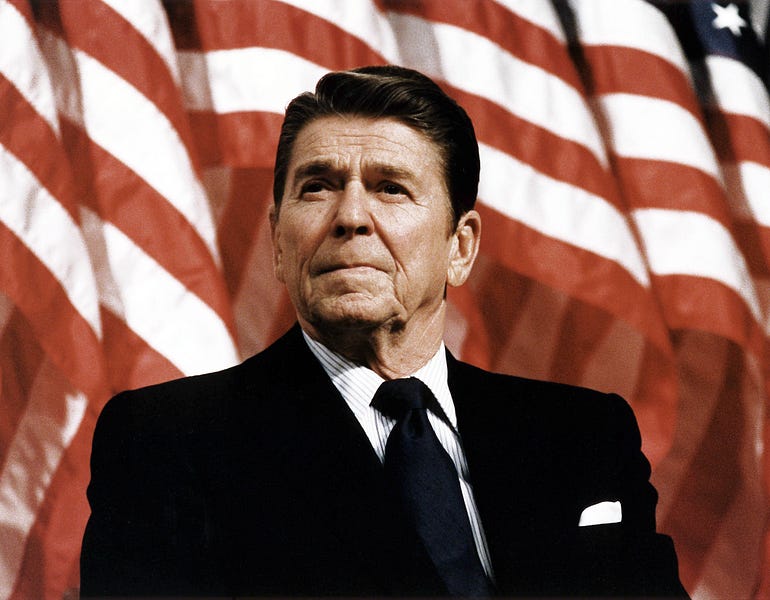

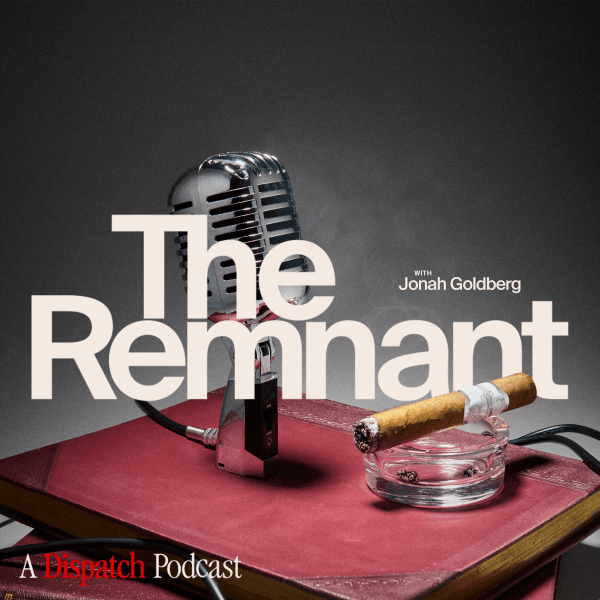
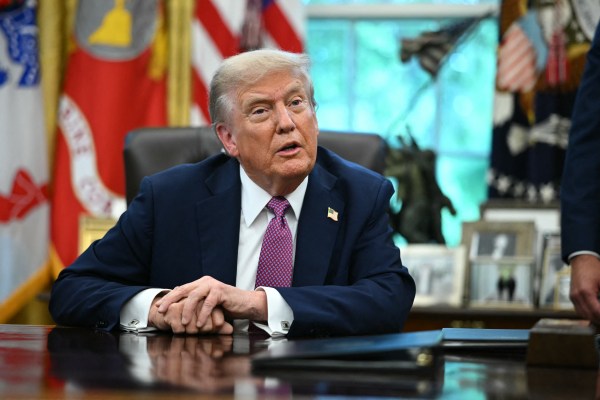
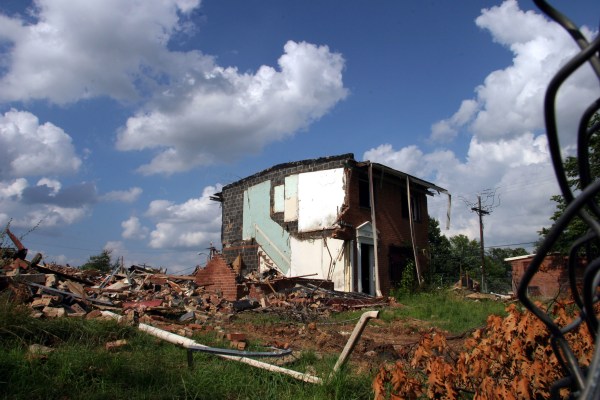
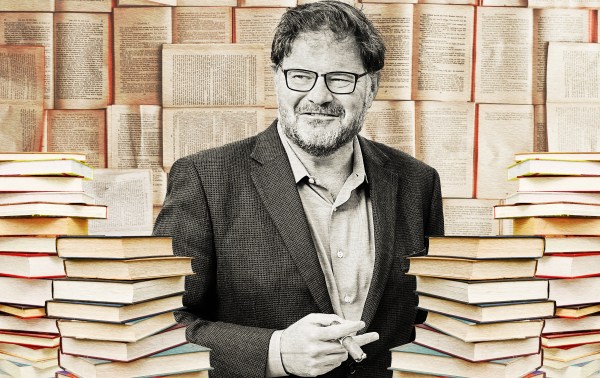
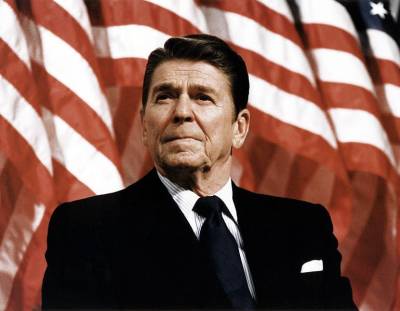
Please note that we at The Dispatch hold ourselves, our work, and our commenters to a higher standard than other places on the internet. We welcome comments that foster genuine debate or discussion—including comments critical of us or our work—but responses that include ad hominem attacks on fellow Dispatch members or are intended to stoke fear and anger may be moderated.
With your membership, you only have the ability to comment on The Morning Dispatch articles. Consider upgrading to join the conversation everywhere.